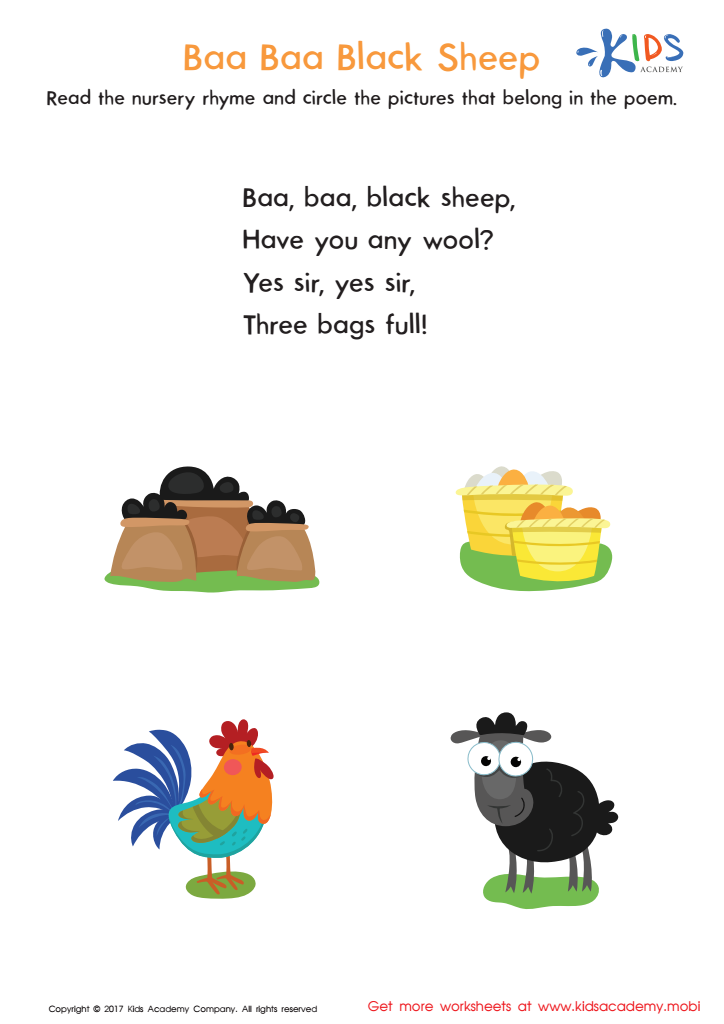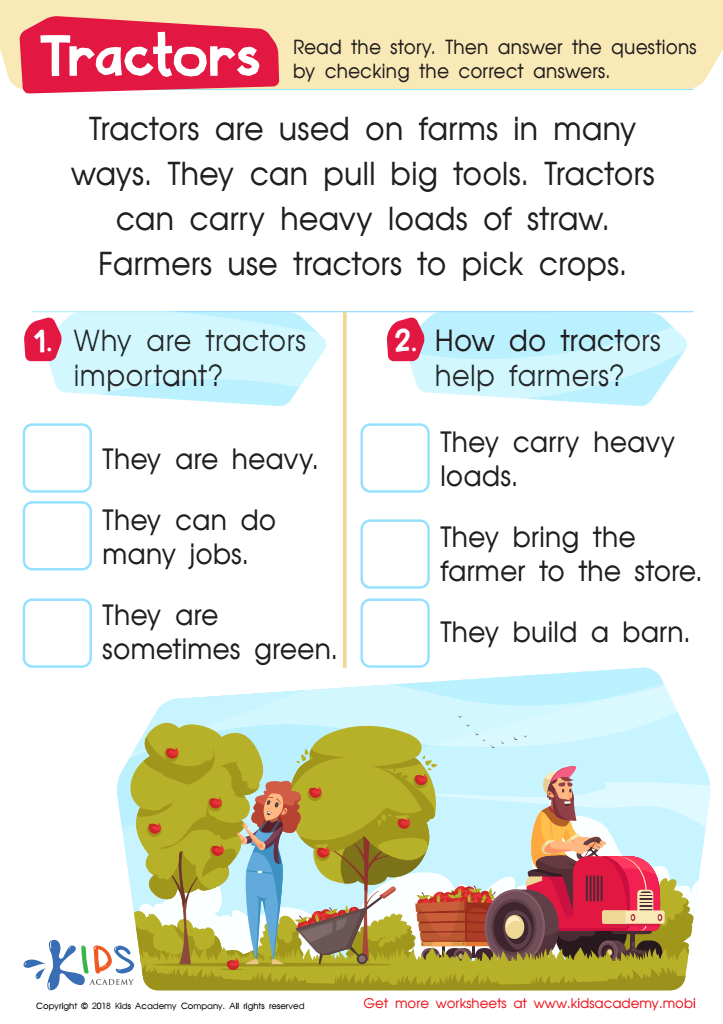Counting practice Reading Comprehension Worksheets for Ages 5-7
5 filtered results
-
From - To
Unlock the potential of young learners with our Counting Practice Reading Comprehension Worksheets, designed specifically for ages 5-7! These engaging worksheets blend essential math and reading comprehension skills, helping children understand numbers while boosting their reading abilities. With fun, interactive exercises, children will not only learn to count, but also enhance critical thinking and comprehension. Perfect for classroom or at-home practice, our resources ensure a comprehensive learning experience that keeps kids motivated. Tailored to meet educational standards, these worksheets are an excellent tool for laying the foundation for future academic success. Explore now and see your child thrive!


Baa Baa Black Sheep Printable


Pre–reading Worksheet: What Do You See?


More Octopus Facts Worksheet


Baby Pandas Worksheet


Tractors Worksheet
Parents and teachers should care deeply about counting and reading comprehension practices for children ages 5-7 because these foundational skills are crucial for early cognitive development and academic success. Young children in this age group are entering the pivotal stages of their education journey, where they begin to build the basic competencies necessary for more complex learning in future years.
Counting is fundamental to numeracy, which helps children understand basic mathematical concepts. Through counting practice, children develop their ability to recognize numbers, understand relationships between quantities, and begin the journey toward more sophisticated arithmetic skills.
Reading comprehension, on the other hand, is vital for language development and literacy. When children practice reading and understanding texts, they enhance their vocabulary, improve their grammar, and develop critical thinking skills. Comprehending what they read also fosters imagination and creativity, and aids in their ability to follow instructions and achieve better outcomes in all subject areas.
Together, counting and reading comprehension practice create a strong academic foundation. Children who are fluent readers and proficient in basic math are more confident, better problem-solvers, and are more likely to enjoy school, significantly impacting long-term educational achievement. Therefore, prioritizing these practices helps ensure that children have the tools they need to succeed both inside and outside the classroom.
 Assign to My Students
Assign to My Students
















